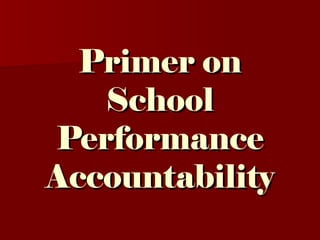The document provides information on school performance accountability in the Philippines. It defines accountability and discusses key principles like having a client focus, being performance oriented, ensuring transparency and integrating accountability mechanisms. It outlines who is accountable for what at different levels from the school to the central office. It also discusses approaches to monitoring and evaluation, and tools for accountability like the school report card.





















































